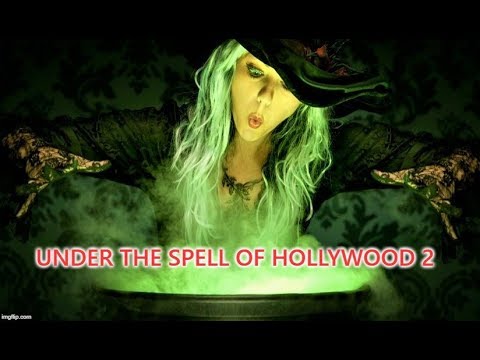“Cliques, ” Blacklight, December–January 1980–81, 5. ?
The Washington Blade reported in July 1978 that six homosexual males have been murdered since January of the year that is same. The guys had been reported to have frequented pubs in DC’s “hustler part near 13th and ny Ave. ” Lou Romano, “D.C. Police Report escalation in Murder of Gays, ” Washington Blade, July 1978, 5. ?
In their essay “Without Comment, ” Essex Hemphill defines the Brass Rail as “the raunchy Ebony club” that is gay “was bulging out of the jockstrap. Drag queens ruled, B-boys chased giddy federal federal federal government employees, fast-talking hustlers worked a floor, while sugar daddies panted for attention within the shadows, providing free products and cash to virtually any friendly trade. ” Essex Hemphill, “Without Comment, ” in Ceremonies: Prose and Poetry (Berkeley, CA: Cleis Press, 2000), 75. ?
Sandra G. Boodman, “AIDS Message Misses Numerous Blacks, Hispanics, ” Washington Post, Might 31, 1987. ?
On November 21, 1978, the newly created DC Coalition of Ebony Gays sponsored a forum on racism within the community that is gay. Among the problems mentioned during the forum ended up being racism when you look at the white-dominated homosexual news. The coalition condemned Out mag, an entertainment that is gay, for the failure to incorporate black colored homosexual establishments. Additionally they objected to individual, work, and housing advertisements within the Washington Blade, the city’s leading magazine that is gay-themed for enabling the addition of racial requirements within their categorized and housing listings. Ernie Acosta, “Black Gays Air Complaints, ” Washington Blade, December 4, 1978, 19, 21. ?
“The File on AIDS, ” Blacklight 4, number 3 (1983): 21–32. ?
“Letter towards the editor, ” Blacklight 4, number 4 (1983): 3. ?
Courtney Williams, meeting by Mark Meinke, 2001, Rainbow History venture, Washington, DC. ?
William G. Hawkeswood, one of many young children: Gay Ebony Men in Harlem (Berkeley: University of Ca Press, 1997), 169–70. ?
Within the editorial “Cliques”(Blacklight, December–January 1980–81, 5) the writer points down that lots of black colored homosexual males “did perhaps maybe maybe not contain the real, social, or financial characteristics that will permit them to occur by themselves among Washington’s black community that is gay for the title associated with game is acceptance. ” Those deemed “low lifes” were left to mingle among their very own “peer” team or be involved in more general general public kinds of sociality, like black or white homosexual pubs or cruising for intercourse in public areas spaces. ?
Historian Kwame Holmes notes how a creation of the geographically and racially restricted identity that is gay DC wasn’t just engineered by white homosexual business owners and governmental companies but in addition enforced and reproduced daily by both white and black colored homosexual Washingtonians. Kwame Holmes, “Chocolate to Rainbow City: The Dialectics of Black and Gay Community development in Postwar Washington, D.C., 1946–1978” (PhD diss., University of Illinois at Urbana-Champaign, 2011; Ann Arbor: ProQuest/UMI), 165. ?
For further conversation of anti-black racism in US public health, see, e.g., James H. Jones, Bad Blood: The Tuskegee Syphilis Experiment (ny: complimentary Press, 1992); Harriet A. Washington, Medical Apartheid: The history that is dark of Experimentation on Ebony People in the us from Colonial occasions for this (nyc: Doubleday xhamsterlive boobs, 2006); and Johanna Schoen, preference and Coercion: birth prevention, Sterilization, and Abortion in public places health insurance and Welfare (Chapel Hill: University of new york Press, 2005). ?
James “Juicy” Coleman, meeting by Mark Meinke, 2001, Rainbow History venture, Washington, DC. ?
Hemphill, “Without Comment, ” 74. ?
Lisa M. Keen, “First-of-a-Kind AIDS Forum for Ebony Gays Held at Clubhome, ” Washington Blade, 30, 1983, 17. ? september
Michael “Micci” Sainte-Andress, meeting by Mark Meinke, 2001, Rainbow History venture, Washington, DC. ?
Keen, “First-of-a-Kind AIDS Forum, ” 17. ?
Courtney Williams, meeting by Meinke, 2001, Rainbow History venture, Washington, DC. ?
“The ClubHouse, 1975–1990: are you able to Feel It? Evolution, ” Rainbow History venture Digital Collections, accessed August 2013, http: //rainbowhistory. Omeka.net/exhibits/show/clubhouse/can-you-feel-it/evolution. ?
Otis “Buddy” Sutson, meeting by Mark Meinke, 2001, Rainbow History venture, Washington, DC. ?
“The Clubhome, 1975–1990: The ClubHouse when you look at the Community, ” Rainbow History venture Digital Collections, accessed August 2013, http: //rainbowhistory. Omeka.net/exhibits/show/clubhouse/clubhouse-in-community. ?
Kwabena “Rainey” Cheeks, meeting by Mark Meinke, 2001, Rainbow History venture, Washington, DC. ?
Brother Ron, “AIDS: A Government Conspiracy, ” Blacklight 4, number 3 (1983): 29. ?
Marlon Bailey demands a change in HIV/AIDS avoidance studies from “intervention” to “intravention, ” “to capture what alleged communities of danger do, centered on their knowledge that is own and, to contest, to lessen, also to withstand HIV within their communities. ” Marlon Bailey, “Performance as Intravention: Ballroom tradition while the Politics of HIV/AIDS in Detroit, ” Souls: a vital Journal of Ebony Politics, customs, and community 11, no. 3 (2009): 259. ?
See “The Clubhome, 1975–1990: Activities during the Clubhome; Children’s Hour, ” Rainbow History venture Digital Collections, accessed August 2013, http: //rainbowhistory. Omeka.net/exhibits/show/clubhouse/events-at-clubhouse/childrens-hour. ?
Gil Gerald, meeting by Mark Meinke, 2001, Rainbow History venture, Washington, DC. ?





